
Science fiction and technology writer
Popular blog posts
Recent forum posts
Discussion Forum
Discussion forumWhat was the deal with OS/2 anyway?
Post #: 193
Post type: Blog post
Date: 2013-06-27 20:56:27.000
Author: Jeremy Reimer
Tags: Computers, Operating Systems
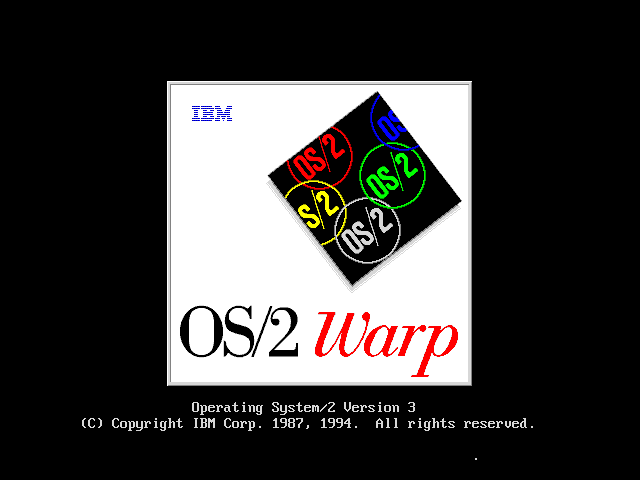
A lot of people today have some sort of vague idea about what OS/2 was, why it existed, and why it failed. Why did IBM fail to unseat Microsoft Windows? The reasons are many, but mostly it boils down to a very successful big computer company being afraid of disruptive change.
IBM hired Microsoft to write OS/2 because IBM wasn’t confident in writing PC software. But IBM still had control of the design of OS/2, even though Microsoft was writing the code. The 386 chip had been released in 1985, but IBM wanted to write OS/2 to support the older 286 chip instead, a chip that Bill Gates had called "brain-damaged". IBM didn’t want to code for the 386 because they were worried it was too powerful, and would cut into their profitable AS/400 minicomputer business.
So if Gates didn’t like the 286, why did he let Microsoft go along with IBM’s plan? Because at the time IBM bestrode the PC industry like a Colossus. IBM was the "bear" and you were either riding the bear or you were under the bear, so Microsoft was going to ride the bear as long as they had to. If that meant dealing with IBM’s strange decisions, so be it. IBM made the rules for the PC industry, and Microsoft followed. Microsoft owed everything they had to the IBM PC and the clones that followed.
But Microsoft was smart enough to see that the winds were changing. IBM couldn’t hold back progress forever, and the decision to design OS/2 around the 286 meant that legacy DOS apps had to be run in the "penalty box", a compatibility box that could only run one app at a time and didn’t work with many apps anyway. (The 386, in contrast, had a ’virtual 8088’ mode that made multitasking many DOS apps fairly trivial).
So while Microsoft outwardly was promoting OS/2 as the next big thing, inwardly they kept dogging away at their Windows thing and they supported the 386 rather quickly (Windows/386 was in fact a special version of Windows 2.0 that multitasked DOS apps using the virtual 8088 mode, and all future versions of Windows would support this feature).
When Windows 3.0 was getting ready to be released, IBM offered to handle all the marketing and promotion, but in exchange IBM would own the code and the future of Windows. Microsoft wisely walked away from the deal. This was the beginning of the Microsoft-IBM divorce.
Windows 3.0 ended up being a smash success, and Microsoft realized that if they just kept telling other people that OS/2 was the future while they built their own Windows apps and stopped putting any real effort into OS/2, they could eventually own the world. Companies like Lotus that hated Microsoft with a passion just couldn’t wait to support OS/2 and ignore Windows. 1-2-3 for OS/2 (called 1-2-3/G) actually shipped before 1-2-3 for Windows. This gave Excel a chance to come in and just swoop up all the 1-2-3 for DOS users that were without a viable upgrade (1-2-3/G was not only late and missing features but performed extremely poorly) IBM eventually released a version of OS/2 that was coded for the 386 (although it still had 286 code in it for a long time) and tried to market it on their own with OS/2 Warp, but by that time IBM was no longer the standards setter in the PC business.
So what lessons can we learn here? IBM was afraid to push ahead its PC operating systems business because it might cut into sales of the more profitable minicomputer and mainframe lines. Microsoft, a more nimble and agile company, was able to ride this transition while preparing their own more powerful PC operating systems.
These days, Windows is the entrenched monopoly, and mobile devices are the disruptive force. The iPhone and iPad (and Android models) are rapidly becoming more powerful and finding their way into traditional personal computer use cases.
Windows, in this case, is the new AS/400, and the iPad is the new 386 PC. Microsoft doesn’t want to make the same mistake IBM did, so they are trying to make their own "386 PC" with Surface and unify their own "tablet experience" with the old school Windows. Thus you get the sort of odd hybrid that is Windows 8.
The market reaction to Windows 8 has not been positive, but Microsoft is used to playing the long game. Don’t count them out just yet.
Views: 7568
Heirs of Infocom: Where interactive fiction authors and games stand today
Post #: 192
Post type: Blog post
Date: 2013-06-23 12:48:13.000
Author: Jeremy Reimer
Tags: Gaming

In my review of Get Lamp, the documentary about text adventures, I mentioned that the original Infocom employees believed the market for these games could exist for hundreds of years. After all, the novel is still around today and, despite stiff competition from movies and video games, writing fiction is still a profitable endeavor. Why not interactive fiction?
The reality, however, is that since the demise of Infocom in 1989, many people have tried to make interactive fiction into a commercial endeavor. None have been able to figure out how to make the financial side work—until recently. Everything changed with the rise of smartphones and tablets.
I had a lot of fun interviewing people like Michael Berlyn for this article, and I think it came out really well. Now I kind of want to write my own text adventure... hmm...
http://arstechnica.com/gaming/2013/06/heirs-of-infocom-where-interactive-fiction-authors-and-games-stand-today/
Views: 7143
Was Brood War a better game than Starcraft II?
Post #: 191
Post type: Blog post
Date: 2013-06-21 21:45:24.000
Author: Jeremy Reimer
Tags: Starcraft, gaming
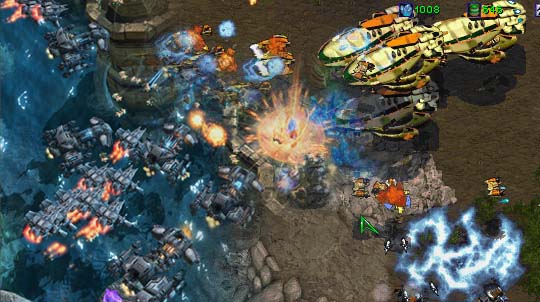
This discussion comes up all the time on forums, between fans of the original Starcraft and fans of Starcraft II, in particular, the professional scenes that evolved around those games.
I watched a ton of both, so I figure I have some idea about which game was "better".
But the answer, like many things in life, is much more complicated than just "this game is better than that game."
Pro Starcraft Brood War at its height, from 2006-2008, was a very unique thing, unlikely to ever be repeated. The scene essentially was 100% Korean, and 100% KeSPA. There were foreigner tournaments, but the level of play was ridiculously low. The players were essentially amateurs. Day[9] was a high school kid and Artosis would quit his job every year a few months before WCG regionals to practice. These were the top-level non-Korean players at the time. Whenever they played Koreans, (which was only once a year) they would get utterly and completely destroyed, like playing against the computer on "Easy" level destroyed.
Meanwhile, in Korea, KeSPA ruled with an iron fist. To stay on a team you HAD to practice well, like 10 hours a day MINIMUM, and you had to work with the coach and do whatever he said and take no breaks ever and you had no negotiating power for your salary AT ALL, and if you didn’t like it? Too bad, there are 50 Koreans begging to replace you. Deal with it.
This pressure cooker environment weeded out the weak and left only the super-strong. Players like Flash and Jaedong would practice until their eyes bled (in Jaedong’s case, this was literally true). The level of competition was so close at the top that any player could take down any player, so everyone had to be on top of their game. This made for exciting matches, with daring cheese and "economic" cheese plays thrown in with series where the multitasking and macro levels went through the roof. It was exciting.
With Starcraft II, everything changed. KeSPA players weren’t playing originally, so the Korean scene was made up of B-teamers, formerly retired players, and a smattering of foreigners, a few of whom managed to do quite well and even won tournaments. The Koreans were overall better, but it wasn’t a complete roflstomp like it was in the Brood War days. This was exciting, but for a different reason. The games weren’t as high-level. They just weren’t. But the situation was different. It wasn’t just KeSPA. There was a thriving international scene. Players could win tournaments without being slaves working in the salt mines 12 hours a day. They could actually compete for teams to get the best salary possible (this was never possible in KeSPA-- the "free agency" they offered was in fact the exact opposite)
The game itself also had some problems. One of the biggest was Broodlord-Infestor. This was actually something that happened almost every game in PvZ, and Protoss had only the "casual fun unit" of the Mothership to try and get a lucky Vortex, and if it missed, or the Zerg split the Brood Lords, or Neural Parasited the Mothership, too bad, it was over. This wasn’t so much fun to watch.
Now, with Heart of the Swarm released and the KeSPA players switching over, things are different yet again. HoTS fixed a lot of problems with the original Starcraft II. Protoss got a counter to Brood Lords (the Tempest) so PvZ wasn’t quite as dumb as it used to be. Terrans got Widow Mines which made things more random and yet skilled players could also bait the shots out with single units. Zerg got Swarm Hosts, which aren’t as good as Lurkers but at least they made for some different strategies and let them "siege up" and do different things, and Vipers allow high-APM players to do amazing abducts. Even Oracles reward the super-skilled, high-multitasking player. It’s better than Wings of Liberty. MUCH better.
Is it as good as Brood War? That really depends on how you look at it. The KeSPA players are certainly taking it to the next level-- look at recent GSLs or Proleague-- these guys are just hammering through different ideas and builds and they are starting to dominate again. But KeSPA doesn’t allow them to travel to international events (with the one exception of MLG) and so they are still isolated from the international scene in some ways.
But is the GAME ITSELF as good as Brood War? That’s really hard to say. I think a lot of what made Brood War great was the players. They suffered for our entertainment, but they raised the game to an art form doing so.
There was something that happened at the end of Brood War when players had to do a "hybrid Proleague", where they alternated Brood War and Starcraft II (at the time, Wings of Liberty). I don’t know if you watched any of the games, but I did. They were terrible. The KeSPA players didn’t care about the game any more because they were all practicing Starcraft II. So when they played Brood War, they just did whatever, and hoped their mechanics would save them. It worked, but dear God the games were boring. THEY WERE BORING.
I thought about this, and I figured that a lot of what made Brood War special, the amazing "metagame", wasn’t so much a factor of the game itself, but it was something the players brought to the game.
The other thing is that back in the day, the KeSPA players were it. There were only so many teams, and each team had only so many players on their playing roster. Sometimes a B-teamer would make it up to the big leagues, and sometimes players retired, but at any given time you had maybe 10 teams and maybe 8 players on the bench. 80 players. There are easily three to four times the number of pro players in Starcraft II.
Having fewer players makes it easier to build storylines, to build rivalries, and to build hype. There were also fewer tournaments, so each one was more special. In Starcraft II, there is a tournament every week and every weekend, and sometimes two at a time.
So, a lot of it is nostalgia, but justified nostalgia in some ways.
A tiny amount of it might be the game itself. It might be. I’m not willing to rule that out.
But things change. Sometimes you fall in love with a game and sometimes you fall out of love with it.
There are pro Brood War tournaments starting to happen in Korea these days. People love the game that much that they will play it even without KeSPA support and salaries. I’ve watched a few of these games. They’re pretty terrible. These are former pros, but they aren’t doing the amazing things that I remember from Brood War. They’re doing dumb things and winning for dumb reasons. I can’t watch them, even though they are playing the ostensibly "better" game. Not even for the nostalgia value. I tried. The excitement just isn’t there.
And it is there for Starcraft II. So I’ll continue to watch.
Views: 13843
Starcraft II: Internet Cat Edition
Post #: 190
Post type: Blog post
Date: 2013-06-17 11:19:39.000
Author: Jeremy Reimer
Tags: Starcraft
This was a photoshop I made after an Inside the Game episode when djWHEAT joked that if Starcraft II added a fourth race it should be the Cat race. I took some of the most famous Internet cats and combined them into a devastating new race!
Watch out for the Longcat Nydus drop!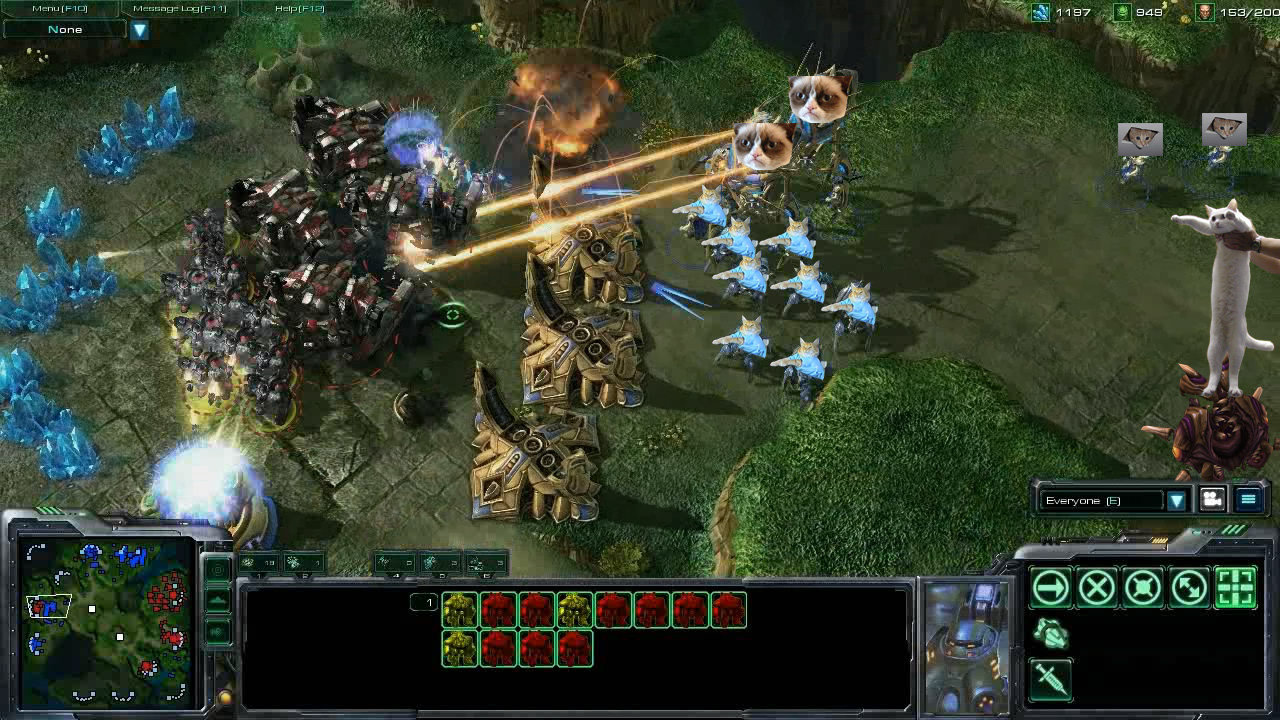
Views: 7019
Knotty Geeks Episode 25 - The Future of Gaming
Post #: 189
Post type: Podcast
Date: 2013-06-11 17:08:11.000
Author: Jeremy Reimer
Tags: Knotty Geeks
We’re back with another podcast, this time from Terry’s idyllic suburban home. In this episode we look at some of our favorite video game genres (Real Time Strategy and Massively Multiplayer Online) and speculate on what they might morph into in the future.
I think this podcast is one of the best we’ve done so far, but we didn’t have time to really get as deep into the subject as I would have liked, so we might do a followup.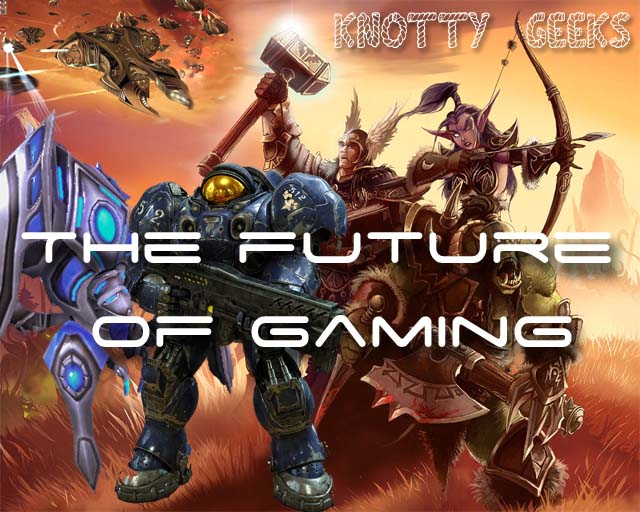
uploads/Knotty_Geeks_Episode_25.mp3" />
Knotty_Geeks_Episode_25.mp3" width="290" height="24" />
Download MP3 file directly
Links from the show:
Sins of a Solar Empire: http://www.sinsofasolarempire.com/
Is RTS a dying genre? http://www.gamesindustry.biz/articles/2013-02-01-ironclad-games-rts-is-a-dying-market
Titan restarted: http://arstechnica.com/gaming/2013/05/report-blizzard-to-overhaul-project-titan-launch-it-in-2016-at-the-earliest/
Star Citizen: http://robertsspaceindustries.com/star-citizen/
Gabe Newell interview on the future of games: http://www.youtube.com/watch?v=t8QEOBgLBQU
Portal alternate reality game: http://half-life.wikia.com/wiki/Portal_ARG
Views: 7117
WCS Finals with Day9, Apollo, and Austin Powers!
Post #: 187
Post type: Blog post
Date: 2013-06-06 20:33:40.000
Author: Jeremy Reimer
Tags: Starcraft
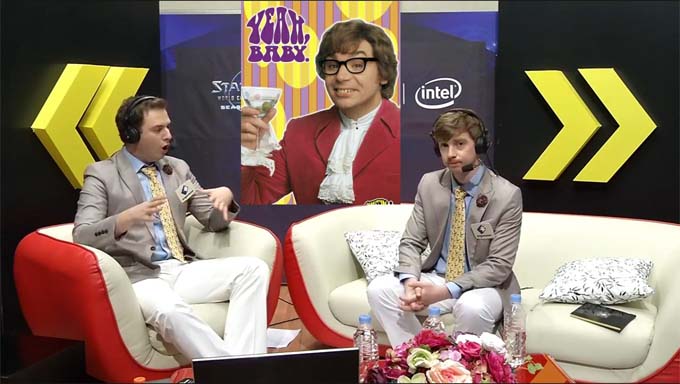
There’s an interesting clash of cultures going on this weekend. Blizzard has contracted out the production of their first season’s final Starcraft tournament to OGN.
OGN is a Korean television network that has been broadcasting Starcraft matches since forever. Unlike GOMTV, they don’t have much experience with broadcasting to a western market. So you get these interesting fashion and furniture choices that look like they came out of Austin Powers, or at the very least a PSY video.
It’s all in good fun. 13 out of the 16 finalists in the tournament were Korean, and the three non-Koreans all got knocked out in the first few hours, so I guess you win this one, Korea. You win everything. Keep on winning on.
Views: 8037
The Pegasus carrier (from my novels) gets its first appearance in a game!
Post #: 186
Post type: Blog post
Date: 2013-06-03 16:24:39.000
Author: Jeremy Reimer
Tags: Writing, Science Fiction, Gaming
Those of you who know me know that I’m a huge fan of Wing Commander. The game had a profound influence on my life and on my writing.
My latest project is taking some of the 3D models that I built for the cover of my science fiction novels (in this case, the Pegasus, the main setting for the trilogy) and converting them into formats that can be imported into the open-sourced Freespace 2 game engine. Freespace 2 was a spiritual successor to Wing Commander and the game engine has been updated with modern graphics features over the years by an amazing modding community.
The model needs work, certainly (at this size, one needs more details and more polygons, and the texture is just a placeholder) but, still... I actually am flying around the Pegasus for the first time. It’s pretty cool.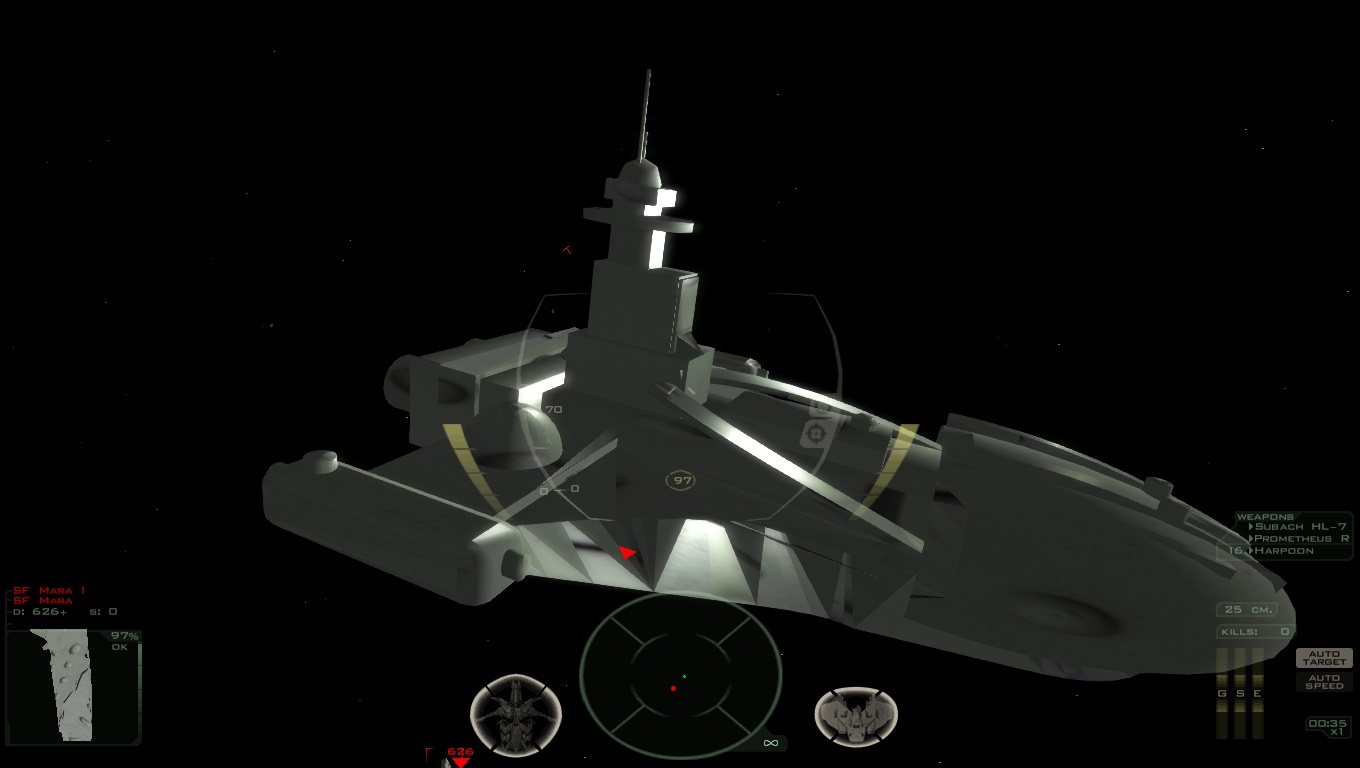
Views: 7770
This Week in Starcraft - Episode 7
Post #: 185
Post type: Blog post
Date: 2013-06-03 16:09:58.000
Author: Jeremy Reimer
Tags: Starcraft, gaming
<iframe width=480 height=315 src=http://www.youtube.com/embed/_IS4tYYYcDA frameborder=0 allowfullscreen></iframe>
In this episode I go over the European World Championship Series finals between Stephano and MVP, and we examine how widow mines are a great unit... for Stephano. It’s worth crushing your head (or the letter S) just to see!
Links from the show:
WCS EU Finals Stephano vs MVP full series
Super friendly widow mine hits
Views: 6966
Knotty Geeks Episode 24 - The Future of Science Fiction
Post #: 184
Post type: Podcast
Date: 2013-05-28 10:46:14.000
Author: Jeremy Reimer
Tags: Knotty Geeks
In this episode of Knotty Geeks, we stick to one topic--kind of. It’s all about the future of science fiction: novels, tv shows, movies, and video games. Is there a future for the written word? Are video games stealing all the young potential sci-fi authors? Will Terry and Jeremy end up in a fistfight at the end when Terry starts slagging Jeremy’s sci-fi novels? TUNE IN TO FIND OUT!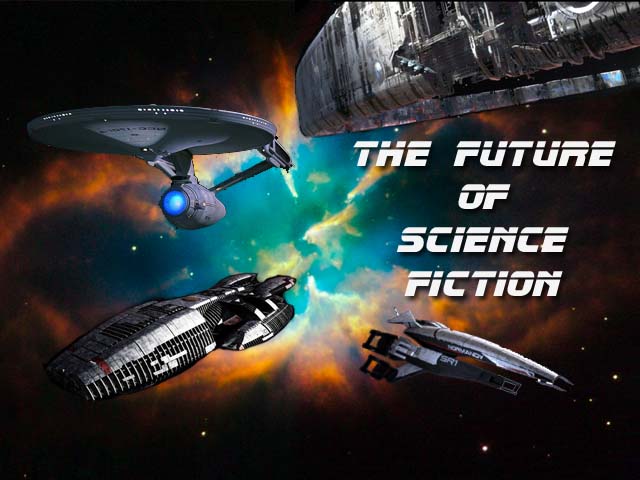
uploads/Knotty_Geeks_Episode_24.mp3" />
Knotty_Geeks_Episode_24.mp3" width="290" height="24" />
Download mp3 directly
Links from the show:
Publisher’s Weekly stats for books sold in 2012
Is science fiction becoming too dystopic?
Buy Jeremy’s novel just to spite Terry!
Views: 7112
Knotty Geeks Episode 23 - Parking Lots and Physics
Post #: 183
Post type: Podcast
Date: 2013-05-22 19:44:14.000
Author: Jeremy Reimer
Tags: Knotty Geeks
In this episode of Knotty Geeks, we are on the rooftop at Oakridge Mall, in full view of a beautiful parking lot. We go over the poll results from the last episode, and then utterly, completely, and totally fail to achieve the results of that poll. I try and fail to remember the name of the physicist I’d seen a couple of weeks ago (it’s in the show notes) and then I try and fail to explain his theories on Physics and then I try and fail to steer the conversation to a specific topic.
This episode also features special guest Brian Palfrey, who has certain views about 3D in movies.
Links from the show:
Lee Smolin, physicist, author of Time Reborn
uploads/Knotty_Geeks_Episode_23.mp3" />
Knotty_Geeks_Episode_23.mp3" width="290" height="24" />
Download mp3 file directly
Views: 6607
So who am I?
I'm a writer and programmer. I write science fiction stories and novels.
I am the writer for the upcoming documentary series Arcade Dreams.
I also write technology articles for Ars Technica.
I'm the creator of newLISP on Rockets, a web development framework and blog application.
- Email: jeremy.reimer@gmail.com
Topics
3D Modeling
About Me
Amiga
Articles
Audio
Blockchain
Blog
Blogs
Book Reviews
Book review
Comics
Computer history
Computers
Computers Microhistory
Computing
Conventions
Crypto
Daily update
Entrepreneur
Family
Forum post
Gaming
Gaming Starcraft
Gaming metaverse
Internet
Jeremy Birthday
Kickstarter
Knotty Geeks
Knotty Geeks (video)
Market Share
Masters Trilogy
Monarch
Movies
My Non-Fiction
My Science Fiction
NewLISP Blog
Novels
OSY
Operating Systems
Pets
Poll
Reviews
Science Fiction
Servers
Software
Software Operating Systems
Space
Star Gamer
Star Trek
Starcraft
Television
Testing
Toys Childhood
Wedding Marriage
Work
Work Life
World
Writing
 RSS Feed for this blog
RSS Feed for this blog